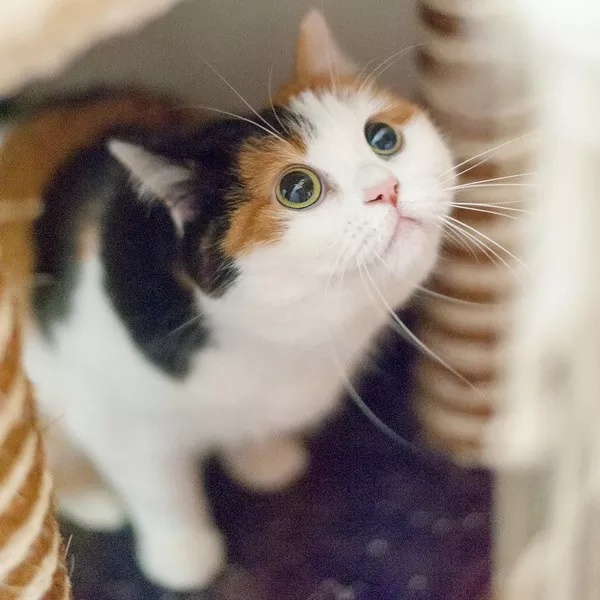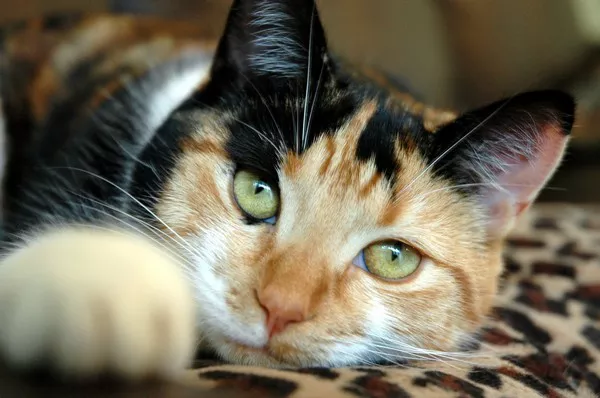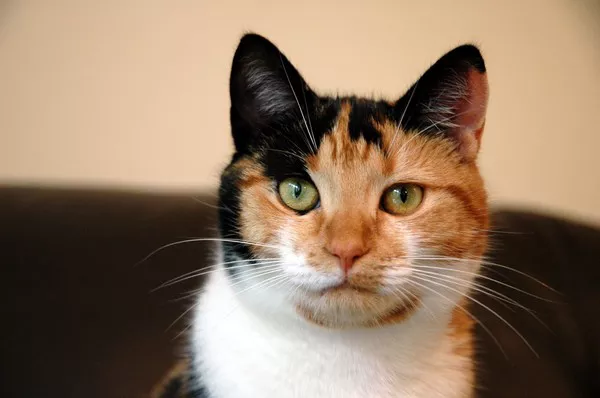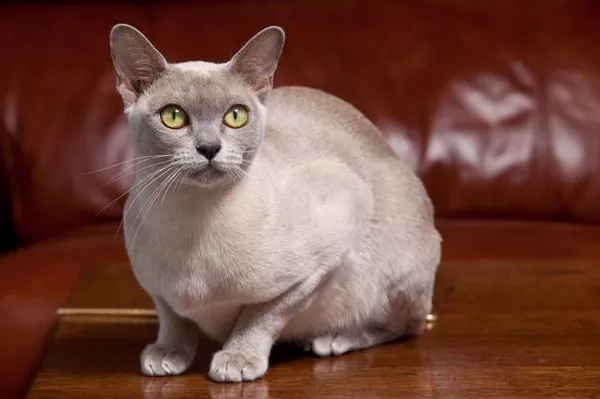Calico cats are known for their strikingly beautiful tri-colored coats, typically featuring a mix of white, black, and orange. However, many calico cat owners find themselves wondering when their calico cats will calm down. This article explores the factors that influence a calico cat’s behavior, the typical developmental stages, and strategies to help manage their energy and temperament.
Understanding Calico Cats
Genetic Makeup
Calico is not a breed but a color pattern that can occur in various cat breeds. The calico coloration is a result of specific genetic mechanisms. It occurs almost exclusively in females due to the chromosomal configuration necessary for the combination of black and orange fur. Male calicos are rare and typically sterile, arising only due to rare genetic anomalies.
Personality Traits
Calico cats often have unique and distinct personalities. While it’s a misconception to attribute specific behaviors to coat color, many owners believe their calico cats are particularly feisty, independent, and spirited. This perception could be due to the diverse backgrounds of the breeds that exhibit the calico pattern, each bringing its own behavioral tendencies.
Early Developmental Stages
Understanding the developmental stages of a cat’s life can help in predicting when a calico might calm down.
Kitten Stage (0-6 Months)
During this period, calico kittens are highly energetic and curious. They are learning about their environment, socializing, and developing motor skills. This stage is characterized by playful behavior, exploration, and, sometimes, mischief.
Juvenile Stage (6 Months – 2 Years)
As calicos move into the juvenile stage, their energy levels remain high. They continue to be playful but may start to show more independence. This is also a critical period for social and behavioral development.
Adult Stage (2-7 Years)
Many calico cats begin to calm down as they reach adulthood. While they still enjoy playtime and can be quite active, they often display more balanced and predictable behavior. Some calicos, however, maintain a spirited demeanor throughout their lives.
Senior Stage (7+ Years)
As calico cats enter their senior years, their activity levels typically decrease. They may prefer more rest and relaxation, although they can still have bursts of energy and playfulness.
Factors Influencing Behavior
Several factors can influence when and how a calico cat might calm down.
Genetics and Breed Characteristics
The breed of your calico cat plays a significant role in its behavior. For instance, a calico Maine Coon may be more laid-back compared to a calico Siamese, known for being more vocal and active. Understanding the breed characteristics can provide insight into behavioral expectations.
Environment and Socialization
The environment in which a calico cat is raised can significantly impact its behavior. Cats raised in stimulating environments with plenty of social interaction tend to be more confident and well-adjusted. Conversely, those in less stimulating environments may exhibit more anxious or hyperactive behaviors.
Spaying and Neutering
Spaying or neutering can influence a calico cat’s behavior. Unspayed females and unneutered males can exhibit more restless and aggressive behaviors, especially when in heat or marking territory. Many owners notice a decrease in hyperactivity and territorial aggression after their cats are spayed or neutered.
Health and Nutrition
Health issues and diet can also affect a calico cat’s behavior. Cats in pain or discomfort may become more irritable or restless. Ensuring your cat has a balanced diet, regular veterinary check-ups, and prompt treatment for any health issues is essential for maintaining calm behavior.
See Also: How Much Do Devon Rex Kittens Sleep?
Individual Personality
Every cat is unique, and individual personality traits play a crucial role in behavior. Some calicos may naturally be more active and playful, while others might be more serene. Recognizing and respecting your cat’s individual personality is important for managing expectations.
Strategies to Help Your Calico Cat Calm Down
Provide Mental and Physical Stimulation
Engaging your calico cat in regular play and exercise is crucial. Interactive toys, puzzle feeders, and scheduled playtime can help burn off excess energy and reduce hyperactive behavior.
Interactive Toys and Playtime
Wand Toys: These mimic the movement of prey and can engage a cat’s hunting instincts.
Laser Pointers: These provide an outlet for high-energy cats to chase and pounce.
Puzzle Feeders: These challenge a cat’s mind and provide a rewarding way to get food.
Create a Safe and Stimulating Environment
Ensuring your calico has a safe and stimulating environment can promote calm behavior. Provide climbing structures, scratching posts, and cozy resting spots to cater to their needs.
Vertical Spaces
Cat Trees and Shelves: These provide opportunities for climbing and observation, helping cats feel secure and engaged.
Window Perches: These allow cats to watch the outside world, which can be stimulating and entertaining.
Consistent Routine
Cats thrive on routine. Establishing a consistent daily schedule for feeding, playtime, and rest can help your calico feel secure and reduce anxiety-related behaviors.
Feeding Schedule
Regular Meals: Feeding your cat at the same times each day can create a sense of predictability.
Portion Control: Ensuring appropriate portions can prevent overeating and related health issues.
Positive Reinforcement Training
Using positive reinforcement to train your calico cat can encourage desirable behaviors. Rewarding calm behavior with treats, praise, or affection can reinforce these behaviors.
Training Techniques
Clicker Training: This method pairs a click sound with a reward, helping to mark desired behaviors.
Reward-Based Training: Using treats and praise to encourage behaviors like sitting, coming when called, and using a scratching post.
Health Check-Ups
Regular veterinary check-ups are essential to rule out any health issues that could be causing behavioral changes. Addressing any underlying medical conditions can help manage and reduce hyperactive or aggressive behavior.
Behavioral Interventions
For persistent behavioral issues, consider consulting a professional, such as a veterinarian or a certified animal behaviorist. They can provide tailored advice and strategies for managing your calico’s behavior.
Behavior Modification Plans
Behavioral Therapy: Techniques such as desensitization and counter-conditioning can address specific behavioral issues.
Medication: In some cases, medication may be necessary to manage anxiety or hyperactivity.
When to Expect Your Calico Cat to Calm Down
While each cat is unique, many calico cats begin to show signs of calming down as they transition from the juvenile stage to adulthood, around 2 to 3 years of age. However, some may maintain a high energy level throughout their lives due to individual personality or breed characteristics.
Signs of Calming Down
Decreased Hyperactivity: Less frantic running and jumping around the house.
Increased Affection: More willingness to cuddle and spend quiet time with their owners.
Regular Sleep Patterns: More consistent sleeping habits and longer rest periods.
Factors Affecting the Timeline
Breed-Specific Traits: Some breeds calm down earlier than others. For example, a calico Maine Coon may mellow out sooner than a calico Bengal.
Individual Differences: Personality plays a huge role; some cats are naturally more active or laid-back than others.
Environmental Factors: Changes in the environment, such as the introduction of new pets or moving homes, can temporarily affect a cat’s behavior.
Conclusion
While there is no definitive age at which all calico cats calm down, understanding the various factors that influence their behavior can help manage expectations and provide a more harmonious living environment. From genetics and breed characteristics to environmental factors and health, many elements play a role in shaping a calico cat’s temperament.

























